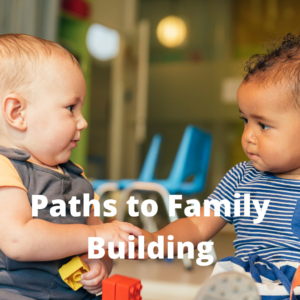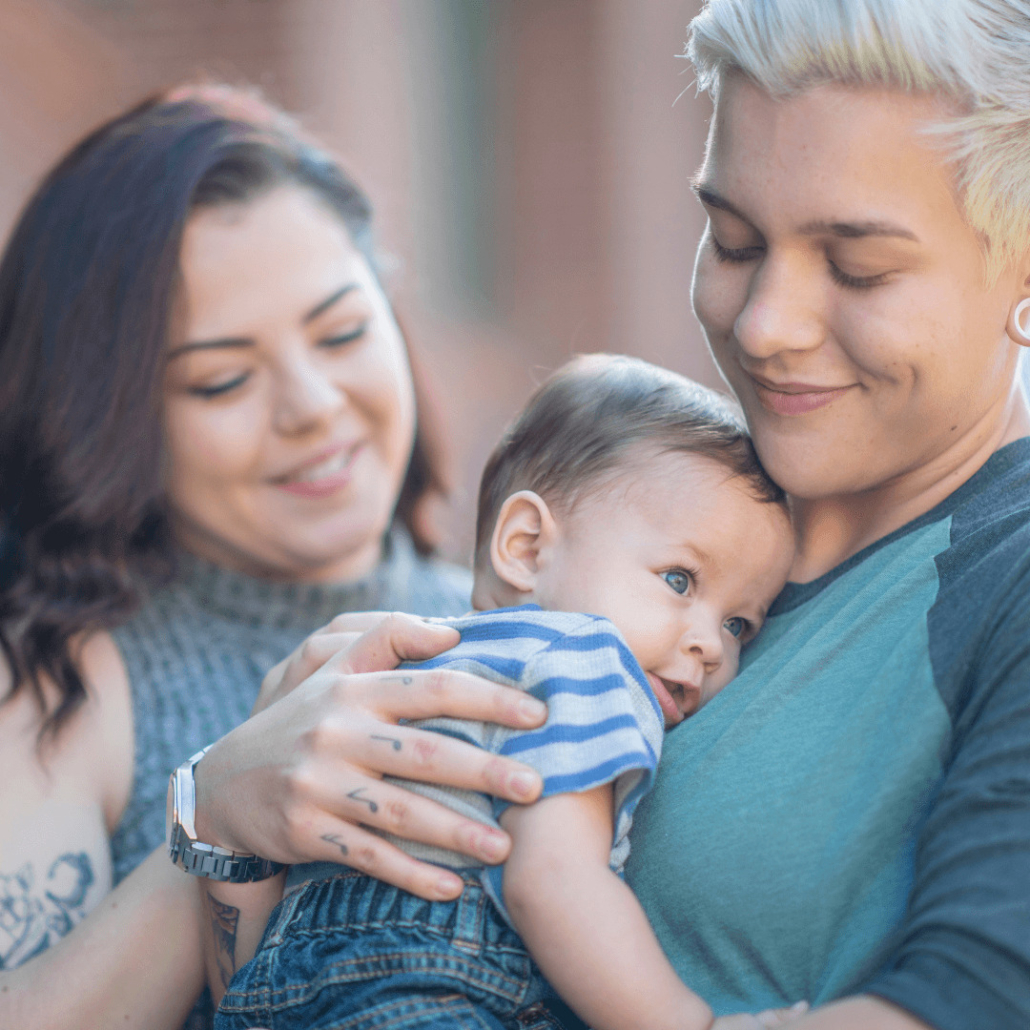If you’re a queer person, LGBTQ family planning may seem like a monumental feat. It already takes more energy to navigate everyday life when you come up against challenges that have to do with your identity. Because of the bigotry that’s built into our societal systems and portrayed in our media, you may not have even considered that you could or should have a family; or if you have, you wonder if your family will be accepted and supported. The idea of LGBTQ family planning can seem daunting, which is where finding LGBTQ-friendly support and resources play an integral role in helping you create a family.
Forming a family is an important step in the lives of LGBTQ people. We have the same dreams as our heterosexual, cis-gender counterparts. We want to see our legacy live on in our kids, and to feel the love a family can bring to our lives. Our rights to get married, adopt, have legal guardianship, and just live like everyone else has been denied for so long and are under continuous attack in the political and social spheres. With the recognition of our humanity on shaky ground, creating a plan for growing a family becomes even more important. Queer families need to be aware of their rights, and need to find and work with professionals and organizations that are LGBTQ-friendly. Queer families aren’t the “norm” within our healthcare and family planning systems, so just to get to the place of having a family becomes harder and more expensive.
Learning About LGBTQ Family Planning
Perhaps in part because our families are not normalized, information about LGBTQ family planning doesn’t widely exist in a way that is organized or digestible. I hope to help that problem with this four-part series on LGBTQ family planning, and to break down each of the options we have to grow our families the way we want while being financially responsible. Even more importantly, I want to providing a place where this is normal to talk about, and recognize that queer families are valid. In this post, I’ll start off with a general overview of the three main pathways to family building, and in later posts I’ll do a deep-dive into each one. First, let’s frame the conversation within a topic I know a lot about: financial planning!

Plan Before You Spend!
Like I said, LGBTQ family planning can be incredibly expensive. Treatments, bureaucracy, expected and unexpected fees, discrimination, failed attempts—all these things are extra expenses that you’ll need to consider. So just because you think you have the money to do something like an adoption, doesn’t mean that you actually do. Going through a family building process isn’t only about saving up; it’s also about the sustained costs. Your planning gets you to the point where you can pay the bill with the money you’ve saved, have cash flow to pay the bills before and after your child arrives, and still have a savings cushion to rely on. If you drain your savings, you won’t be in a financially stable place to have any new family members. No matter what path of family building you’re taking, you need to consider what happens after you pay the initial costs. With that in mind, let’s do a brief overview of the three main paths to building a family.
Surrogacy
Surrogacy encompasses two types of methods: traditional surrogacy and gestational surrogacy. In a traditional surrogacy, the surrogate is artificially inseminated and then carries the embryo to term. Gestational surrogacy, using IVF, creates an embryo in a lab using the intended parents’ biology. The embryo(s) are then implanted in the surrogate. Gestational surrogacy is the only way that some LGBTQ+ individuals and couples can have biological children.
This process involves many professionals with expertise in egg donation and surrogacy, including those who know how to navigate state-by-state laws. Depending on what option you choose, you could be spending upwards of $150,000 if you’re hiring an agency. While you could go at it independently to lower the cost, you would need to be prepared to handle all the processes alone and without professional guidance. Additionally, unlike other medical expenses that can typically be written off, surrogacy does not have any tax credits or benefits.
Read More: A Guide to Surrogacy for LGBTQ Parents
Adoption
Just a few months ago, the Trump administration argued that faith-based adoption agencies should be able to reject same-sex couples. Whether you agree or not, the news alludes to the potential costly challenges LGBTQ people can have with adoption depending on their state laws.
Outside of discrimination, LGBTQ individuals and couples seeking adoption will need to budget for adoption fees covering the cost of the adoption agency program, home study, legal fees, travel expenses, and in some states, birthmother expenses. The average cost of an adoption is $35-40k. A $14k tax credit for adoption is also available, effectively lowering the cost. When adopting, you can usually choose between an open, semi-open, or closed adoption.
Read More: Adoption for LGBTQ Family Planning
Fertility Treatments
Fertility options for LGBTQ individuals and couples often intersect with surrogacy, but not necessarily. Options include sperm donation, Intrauterine insemination (IUI), In vitro fertilization (IVF), egg donation, and surrogacy. The costs for some of these options can be straight forward, while others, such as IVF, can have a lot of unexpected additions and extras as you try to have a successful outcome.
Investigate what type of fertility treatments you may need. Determine what the costs are for your situation, and check to see how and if your insurance covers fertility costs. If you have some time before you want to start, you can look into insurance choices to see which one works best for you. Some workplaces also cover fertility treatments and family building. Your next steps might be getting different insurance, or funding an HSA or other type of pre-tax reimbursement account. If you plan ahead, you can find ways to save money and go through fertility treatments within your means.
The Bottom Line for Queer Family Planning
Whether you’re choosing surrogacy, adoption, fertility, or a combination, LGBTQ family planning requires that you save up a large sum of money for upfront and ongoing costs. You’ll need to know how you’ll save that money and where else you can pull it from. And once you pay those initial bills, where will that leave you financially? Have you provisioned for the unexpected to happen such as an adoption to fall through or a transfer attempt that doesn’t take? While the prospect of growing your family is exciting, you need to prepare mentally and financially for the road ahead.
Read More: Planning for a Baby, Financially? Things to Consider
In our next post, we’ll take a deep dive into the ins and outs of surrogacy and how to make a solid financial plan that covers the expected and the not-so-expected of LGBTQ family planning.

Jim is a financial advisor and owner of Thinking Big Financial, Inc. Thinking Big Financial is a fee-only registered investment advisor offering financial planning and investment management services. Specializing in working with the LGBTQ Community.
Please read my legal disclaimer here.

